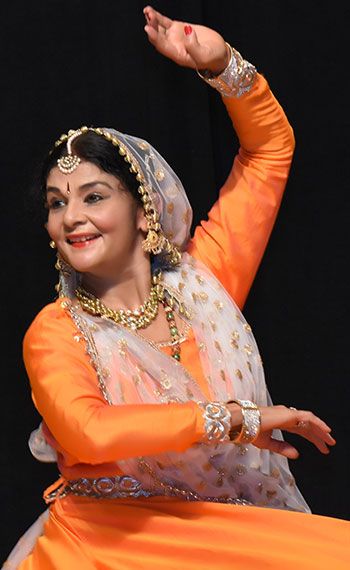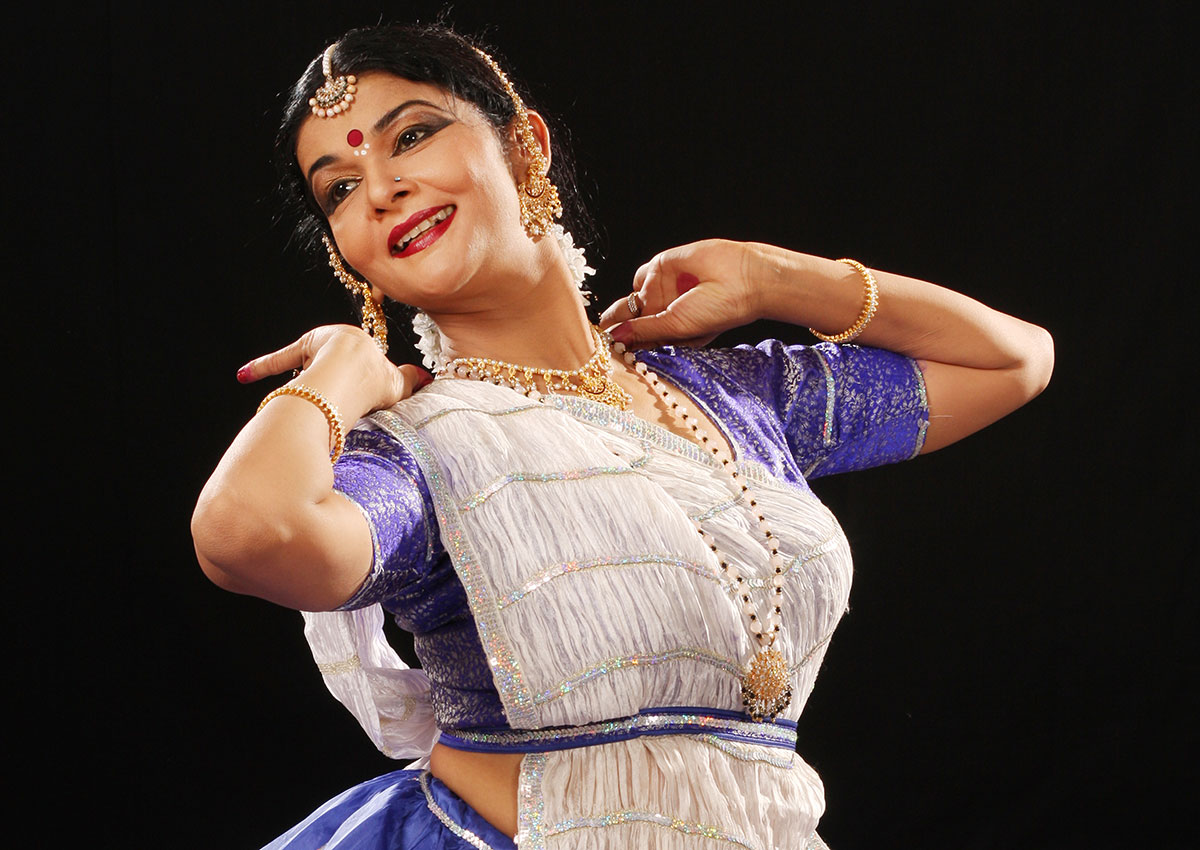Shila Mehta “I Was Born To Dance”
Internationally acclaimed Kathak exponent Shila Mehta is also recognized as a fine choreographer, mentor and writer and her career spans for more than three decades and she has established Nupur Zankar Academy of Performing Arts and Research Centre in Kandivli, Mumbai. This year her Nupur Zankar in USA was inaugurated by the Mayor of East Windsor, New Jersey and well received by the media. Nupur Zankar has branches both in India and abroad, mainly in Belgium/UK and USA , In an exclusive interview with VIJAY SHANKER for CINEBUSTER, Shila Mehta narrates her experience as a performer, teacher and much more.
 How were you initiated to dance?
How were you initiated to dance?
I was born to dance and belong to a large family of seven children, hailing from Kathiawar (Gujarat) but born and brought up in Kolkatta. Hence I have imbibed the best of Gujarati and Bengali culture. Dance as an art form has been a natural inclination for me. I used to dance a lot and would start crying if I was asked to stop and so at last I was enrolled in a dance class
Who was your first teacher?
My first teacher was late Pandit Prahlad Das
Why did you select Kathak?
While I was exposed to different styles of dance, living in Kolkata where art merges well with culture and classical artists are held in great esteem, I realized that Kathak is a unique dance form and the technique and the spins caught my fancy quite early in life, and became my passion and now it is my life itself.
Tell us your experience with your mentors?
Although I started with Pt Prahlad Das,the mentor who developed my style and my growth as a danseuse is Pt V Shankar, who today is acknowledged as one of the finests. I am also inspired by Pandit Bhirju Maharaj, Pt Chitresh Das, Tabla maestro Pt Suresh Talwalkar and veteran exponent of Abhinaya in Bharata Natyam Kalanidhi Narayanan
What is your concept about the Gharanas in Kathak?
Every Gharana, whether it is Lucknow, Benares or for that matter Jaipar has own individualistic quality pertaining to the style of presentation and technique. It is unfair to state that a particular Gharana (school) is superior or inferior.In other words whether it is jasmine, rose or lily, each flower has its own fragrance and beauty. I have learnt and observed different Gharanas, trying to refurbish my style of presentation and technique. Since classical dance is visual art, it is important as to how you move, dance and perform, as the aesthetic quality and the divine aspect of dance should be experienced by the dancer as well as the “rasikas”.
Tell us about your book.
My book Practicals in Kathak will be translated shortly into English-:- It has Kathak dance notations with forward by dance historians and scholars like Dr.Sunil Kothari, Padmashree Darshana Jhaveri. It will be very soon released. It will be very useful book for students of Kathak
Tell me about your experience as a teacher both in India and abroad?
Most of my senior students are now professionals and taking this tradition forward to the next generation- Keeping the traditional Guru Shishya Parampara parampara alive. But I believe in training the kids from very young age. The ideal age would be around five years. These days children are quite smart and intelligent. Classical dance is just not physical, it is much more than that and it is fine art that combines the mind, body and spirit. You need to concentrate mentally and physically be prepared to go through the physical pain which is part of the growth of classical dance. Parents are restless, and hence want fast results, and there is no short cut in classical dance. It is a continuous process of learning, practicing and performing, and the more you perform, the better it is. Maturity comes at a later stage. In other words classical dance is the expression of the soul, hence it is not easy to master classical dance. When it comes to foreign students, many of them are already aware of the significance of classical dance, as they read a lot before enrolling in the class and that is important, otherwise they might ask stupid questions which could be irritating at times. Nevertheless in my class it is the complete growth of the individual both as a dancer and as a fine human being.”
What has been your experience as a choreographer?
My choreography includes Moods Spectrum, Abhisaar, Panchatatvam. Blue Jackal and the latest Mahasati which is based on Jain philosophy and portrays the story of a royal lady who faced adversity with strong will and determination and emerged victorious. I choreograph when I feel inspired as it is important that the theme should touch my heart. My choreography for Vibrant Gujarat for thousands of children was most enriching and unusual too.
How would you define yourself as a dancer?
For me Kathak is a form of expression and communication that helps me to understand myself better and also helps me to connect with others
Lastly, tell me about your future aspirations or plans?
I get excellent response from every part of the world and am extremely proud to be an Indian and completely devoted to my work in which I promote, motivate and inspire the next generation by teaching them the traditional and cultural values of life with a contemporary approach.


